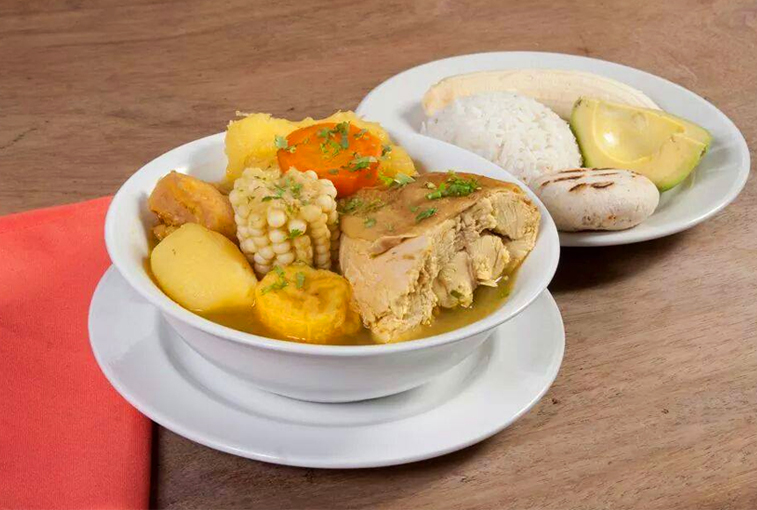Tasty Barranquilla
Tuesday, October 21, 2014

Enrique Patiño
“It’s tasty!”, the woman says approvingly after savoring the first spoonful of sancocho de guandul (a pigeon-pea stew with chunks of dried meat) that she’s served in a busy restaurant overflowing with people. This is followed by an exclamation of “this is fantastically tasty!” from her fellow diner as he swallows his first mouthful of the day’s fish stew. In the background can be heard the scraping of spoons and the murmuring of the crowd of people crammed into Sancocho y Asados restaurant on 84th
Street with 43 at a very hot 1.00 p.m. in a Barranquilla where the temperature in the sun never seems to fall below 32 °C.
Behind that word ‘tasty’ (in Spanish, sabroso) –which is gastronomically irreverent in many people’s eyes– is a concept that is common knowledge in Barranquilla but is rarely voiced: the word has a broad and profound meaning, one that reveals the city’s identity and encompasses its entire Caribbean culture.
Nobody in Barranquilla fails to point out that you have to have ‘taste’ or ‘tastiness’ (sabor) in your life, and this applies to how you live, love, eat, dance and enjoy yourself. In no specific order, but all those things, without exception.
The figures also bear this out: three surveys early in 2014 revealed that Colombia enjoyment. Where does this come from? 23-year-old Vanessa Saldarriaga, who dances like a woman possessed when she hears a drum, has the answer: “That’s how it is!”, she explains. End of story.
But there is a real background to all this. The city has received waves of migrants, most of them in the late 19th and early 20th centuries. Arabs, Jews and Europeans from Germany and Italy, but also immigrants from Spain and even from China, arrived from the other side of the Atlantic, bringing with them their own flavors, and these mingled with African dishes and recipes handed down by indians to create a diversity that has nourished the local “tastiness” in a natural way. Unlike other cities, eating well is the happiest country in the world, for some strange reason, and in Barranquilla the percentage of the population who were happy was way above the average. A ‘Barranquilla cómo vamos’ (‘Barranquilla: how we’re doing’) survey showed that 77% of the local inhabitants are proud of the city and delighted to live there. When El Heraldo local daily newspaper conducted its own survey, it found that 87% of people said they were happy in Barranquilla, the city where people are the most willing in the world to let smiles predominate over tragedy. When they dance, quite a few of them shout “Saborrrr!”.
Tablecloths
Simply everyone in Barranquilla stops what they’re doing at midday to have lunch at home or with friends. For them, it’s as deep-rooted a passion as Carnival itself, because it’s synonymous with variety and in Barranquilla is more a question of deeprooted popular tradition than of restaurants.
All this is perfectly visible. In a single street you can encounter the flavors of chicharrones (pork crackling), carimañolas (cassava fritters), butifarras (sausages) from Soledad served with lime, bollos de yucca (cassava wraps) and angelitos (similar, but with coconut), or Syrian or Lebanese restaurants where kibbeh, tahini and stuffed eggplant are prepared; you can get pita bread on street corners, or exotic desserts made from cocoa plums or yams; or you can experience the real tropics but with an Italian name, tutti frutti, which is simply a fresh fruit salad.
Barranquilla is so diverse that not even the locals realize they’re living in one of the cities with the best and most varied cuisines on the continent. As you wander from street to street, you go from Italian ice creams and pizzas cooked in traditional Naples style to Argentinean barbecues served by nostalgic soccer players who have set up in business in the city where Junior, the local soccer team that is more of a passion than a mere sentiment, plays.
The tropics reign, and that means excess. Juices with strong flavors like medlar and sapodilla, cohune and papaya, passion fruit and soursop can be found virtually everywhere. And this excess even extends to fast food, where popular creole variations abound, such as grilled hot dogs with ‘nationalities’, ranging from Scottish to Swiss, always topped off by a quail egg. But the very best of the tropics is a green mango with salt and lime, which can be bought in bags for COP 1,000 on almost every street corner.
This is the Barranquilla where the locals eat and enjoy themselves with sabor and which they call sabrosa, where they breakfast on fried dishes whose origins date back to African slaves and whose descendants repeat the initial combination of American corn and egg to make the emblematic arepas de huevo (corn cakes with a fried egg inside), and who have innovated and invented sweet corn cakes with aniseed; the Barranquilla that enjoys fried fish and worships seafood, the one that makes rice with noodles, lentils, black beans or, of course, with coconut, the dish most sought after by tourists; the one that goes crazy for a crunchy cheese finger.
Everything is so natural, so readily available on every street corner, that eating and enjoying yourself are part and parcel of everyday life in the self-proclaimed happiest city in the world, where tastiness –sabor– is part of the very soul, is the spice of life, the condiment that protects you from the hardships the city also suffers because of corruption and informal employment. “If Barranquilla suffers, why are so many people happy there?”, I ask. “That’s how it is!”, comes back the answer, with a broad smile.
You may find more destination articles at www.aviancaenrevista.com.
.jpg)
